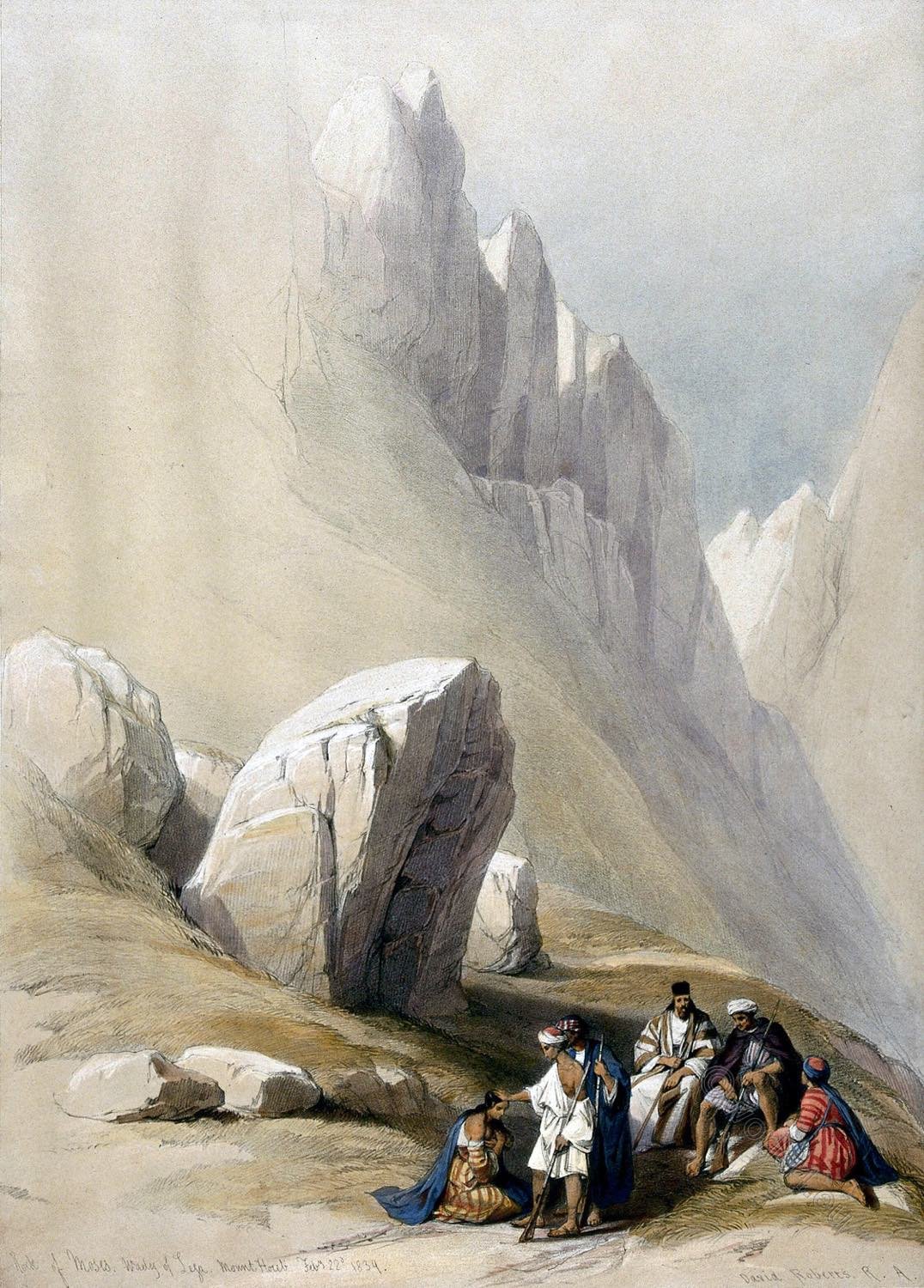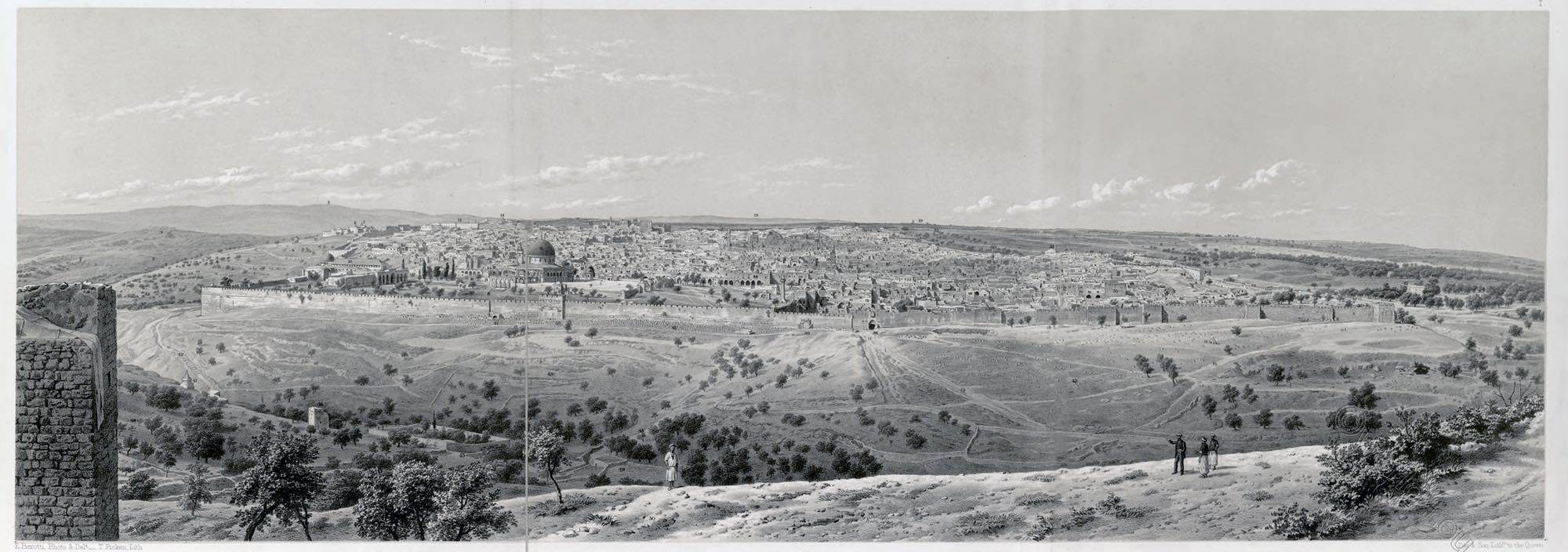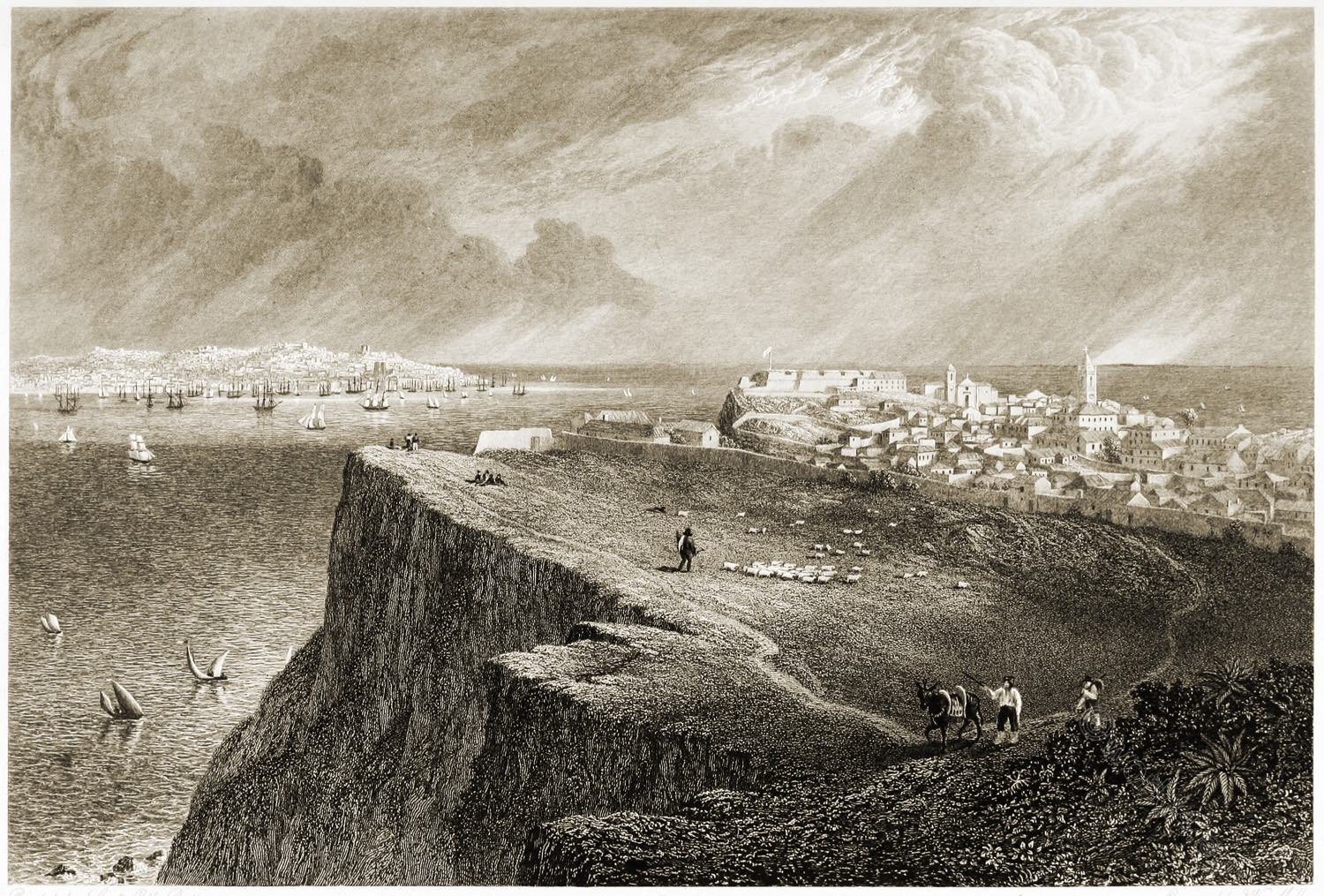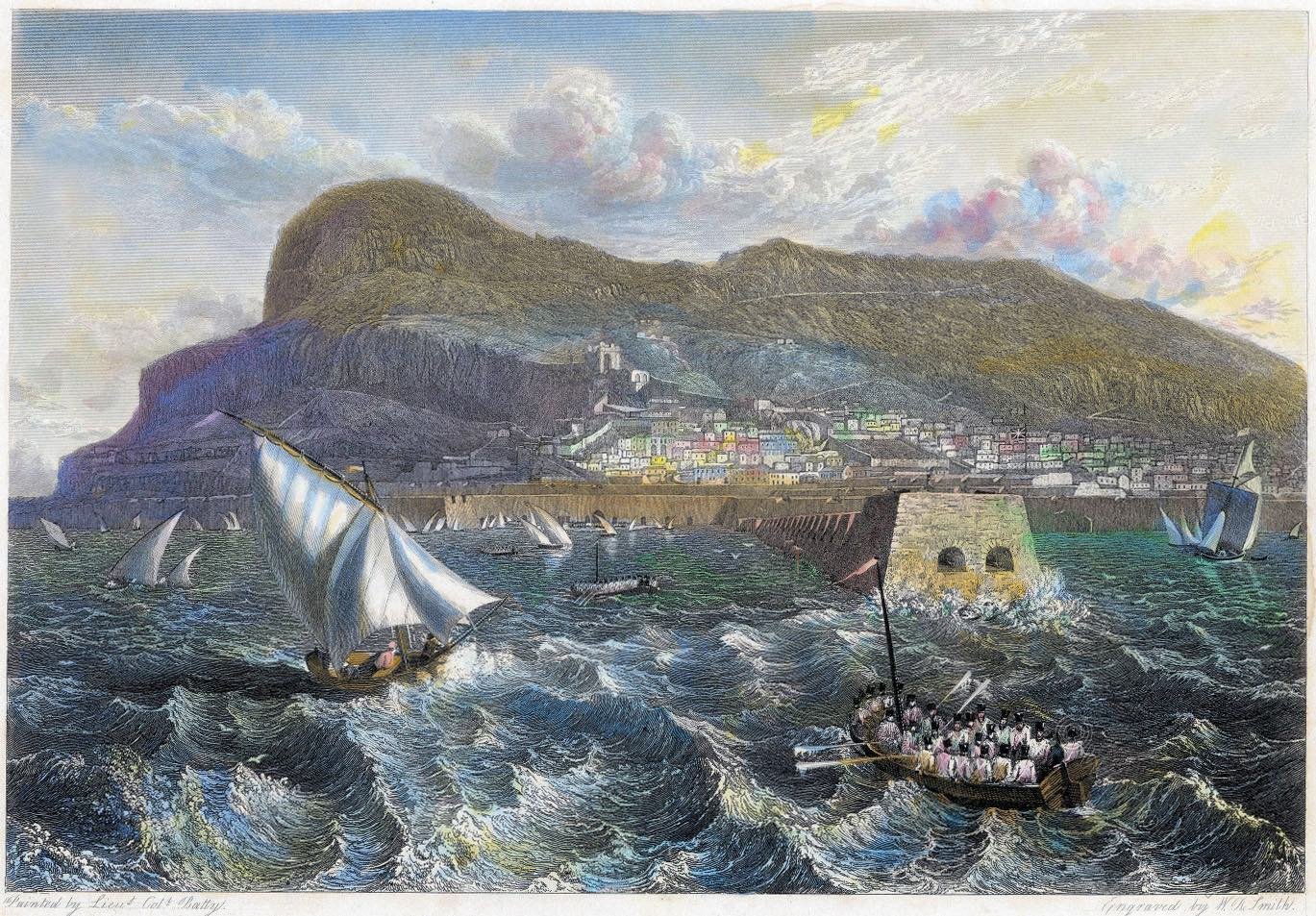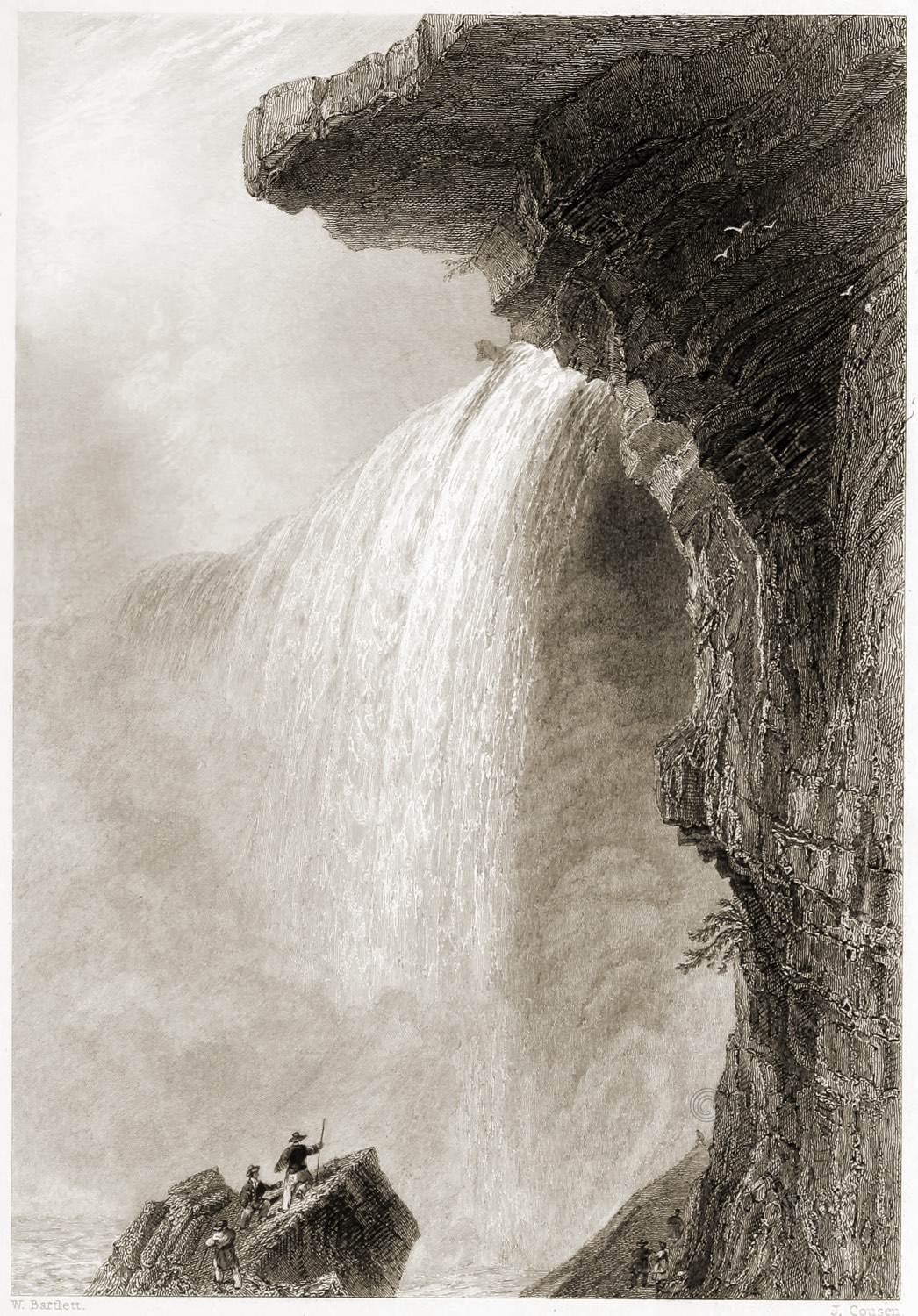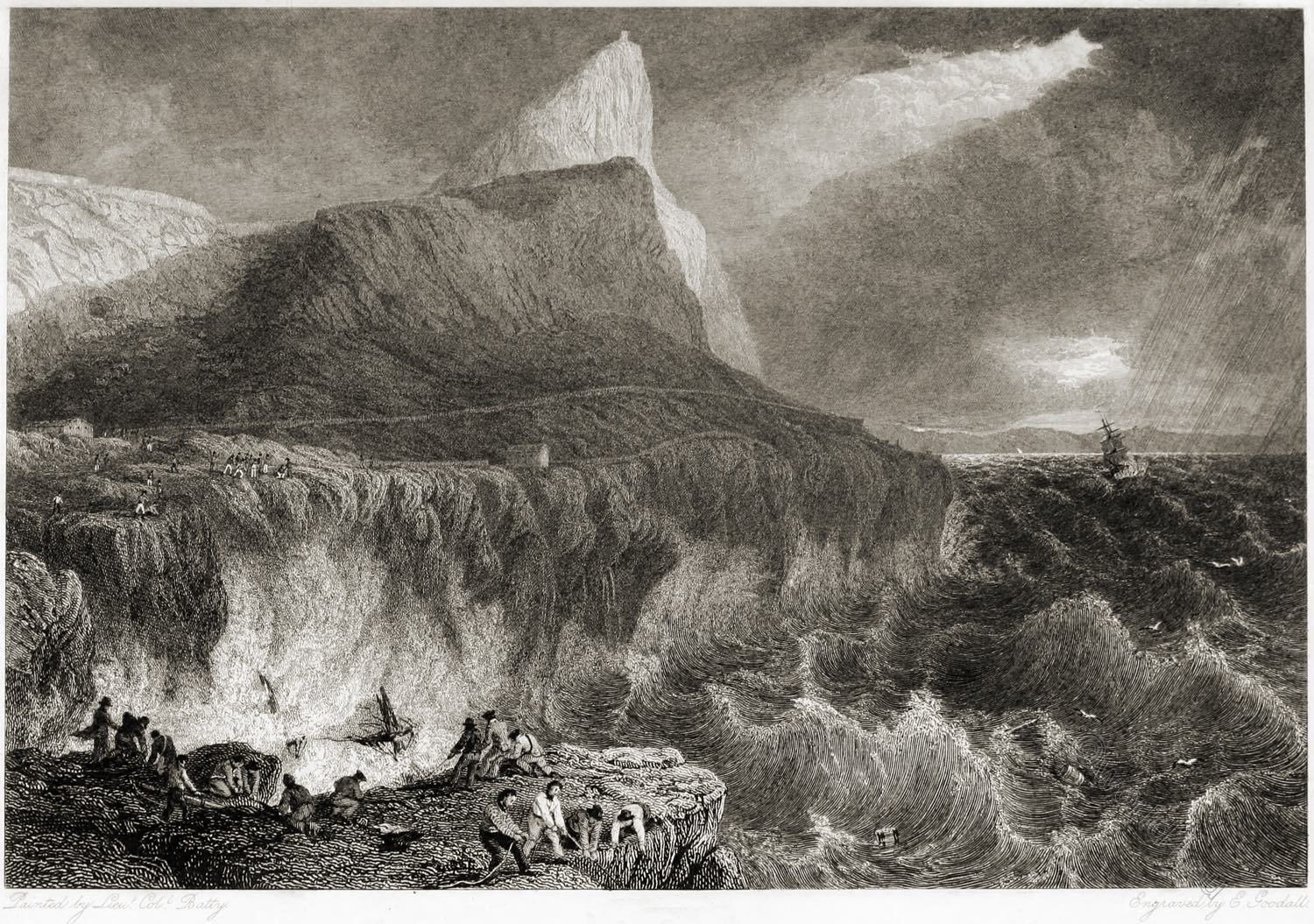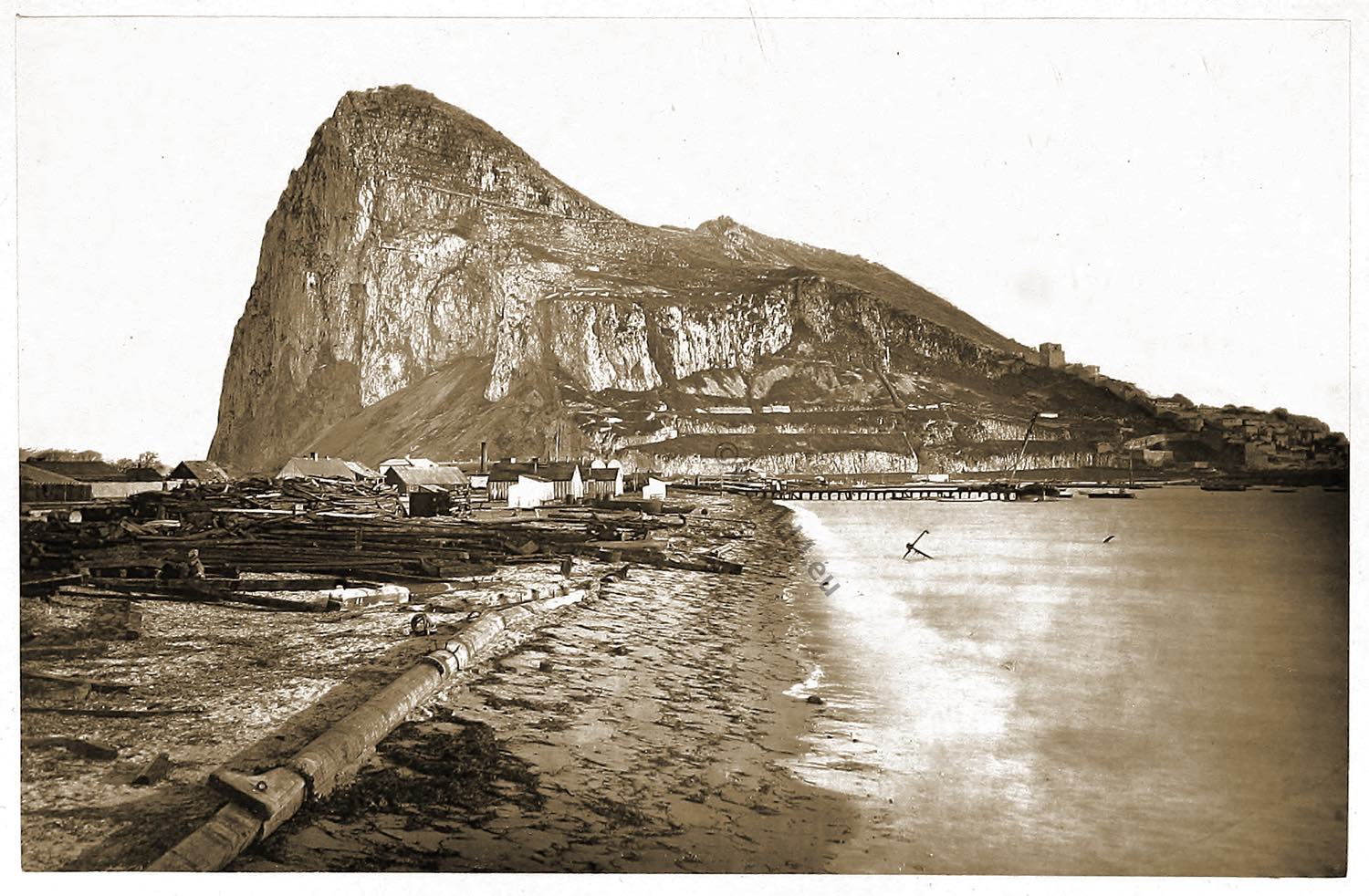
THE ROCK OF GIBRALTAR.
THE first impressions felt on viewing this far-famed rock are its remarkable resemblance in outline to a gigantic lion, or, as some imagine, colossal sphinx, crouched on the sea’s borders, and guarding the narrow passage which alone separates the Atlantic from the Mediterranean. To the left lies the tranquil bay of Algeciras, with its transparent waters, and above it tower many-colored hills, whose tops are, in the spring, snow covered. The contrast between the grim, formidable old rock, and the gracious landscape opposed to it, is indeed great; but, grim as it appears seen from a distance, it has, perched high up, its beautiful gardens, out through the groves of cactus, aloes, or shadowy pines of which delicious peeps are obtained of the golden waters of the bay, and azure hills beyond.
On the heights of the rock, where the side is as steep as a wall, and entirely hidden behind thick masses of palmettos and prickly pears, are numerous loop-holes, through which the black muzzles of huge cannon project, and which are approached by subterranean galleries many thousand yards in extent. These were constructed about 1788, after the combined nations of France and Spain attempted to take the old rock from its possessors.
On the highest part of the rock stands the Signal House (El Hache), from which a magnificent panorama meets the gaze. This point is between 1,600 and 1,700 feet above the level of the sea. It is said that on a clear day the ships may be seen arriving and departing from the port of Cadiz, some hundred miles or more away; Granada, Seville, and Morocco are easily seen in the distance.
At our feet lies Europa Point, a narrow slip of land advancing out seawards, covered with gardens and villas; on the right, the graceful outline of the bay, the town of Gibraltar, with its harbor filled with tiny vessels (the great three-deckers having the appearance of mere toy-boats); on the left, the little town of Algeciras, a line of towers marking the spot where English territory ends and Spanish begins. Behind this rise the mountains of Ronda, backed again by the high peaks of the Sierra Berineja, and again by the snow-covered Alpuxarras. No finer panorama could be imagined.
The patriotic ideas of Archbishop Trench, on visiting Gibraltar, are found embodied in the following lines:-
"England! we love thee better than we know,
And this I learn'd, when after wandering long
'Mid people of another stock and tongue,
I heard again thy martial music blow,
And saw thy gallant children to and fro
Pace, keeping ward at one of those huge gates
Which, like twin giants, watch the Herculean straits.
When first I came in sight of that brave show,
It made my very heart within me dance,
To think that thou thy proud foot shouldst advance
Forward so far into the mighty sea.
Joy was it and exultation to behold
Thine ancient standard's rich emblazonry,
A glorious picture by the wind unroll'd."
W. B. WOODBURY.
Source: Treasure spots of the world: a selection of the chief beauties and wonders of nature and art by Walter Bentley Woodbury (1834-1885); Francis Clement Naish. London: Ward, Lock, and Tyler, Paternoster Row, 1875.
Related
Discover more from World4 Costume Culture History
Subscribe to get the latest posts sent to your email.

